
What is an Instant Pot and should you buy one?

In our busy world, any product that saves time on chores is worth its weight in gold.
Many kitchen appliances claim to do that, but there’s one in particular that’s so versatile it replaces multiple kitchen gadgets: the multi-cooker.
And there’s one multi-cooker brand in particular that’s developed a cult following, and it’s now even started muscling in on another cult product’s turf.
If you’ve never heard of Instant Pot, you’ve probably been living under a rock. Or perhaps you’re just not on social media, where gushing posts about its cooking prowess abound.
If you’ve never heard of Instant Pot, you’ve probably been living under a rock
There’s an Instant Pot Community on Facebook that’s 3.2 million strong, and 805K followers on the official Instant Pot Facebook page, and then another 524K followers on Instagram. Some Instant Pot YouTube videos have amassed millions of views.
Search for ‘Instant Pot’ and Google will serve up a seemingly endless list of websites and videos dedicated exclusively to Instant Pot cooking.
So, what is an Instant Pot – and should you believe the hype?
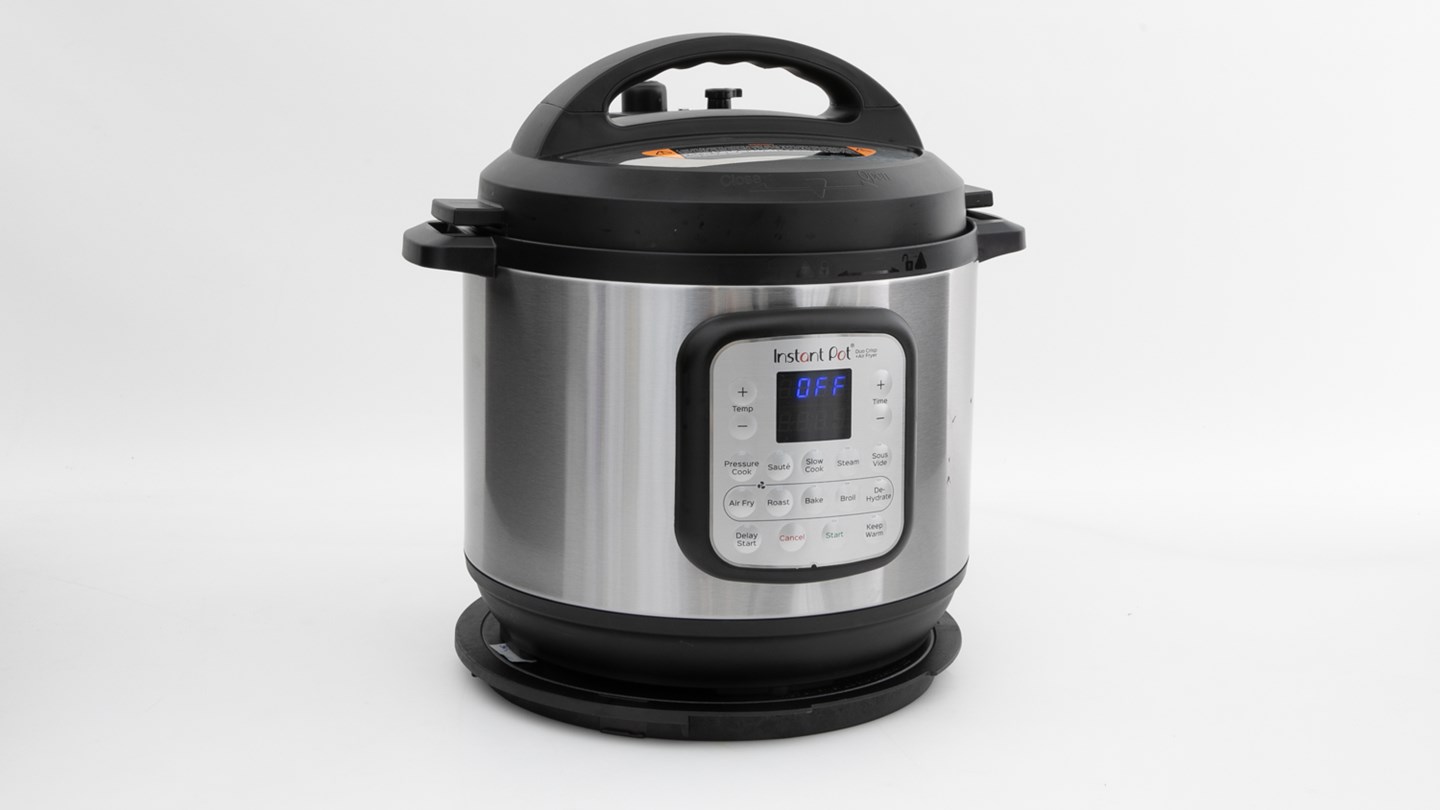
What is an Instant Pot?
An Instant Pot is essentially a multi-cooker: an appliance that combines the functions of several cooking appliances into one unit.
It effectively replaces multiple kitchen products – it’s a bit like the Thermomix of the slow cooker world.
The multi-cooker brand gained a cult following when it launched in North America in the 2010s, and since its launch in Australia in 2019, it’s been embraced here as well.
It’s since been overshadowed by the air fryer as the appliance of the moment, but Instant Pot has recently upped the ante in the fight for your bench space by adding an air fryer feature to its newer models.
Instant Pot has recently upped the ante by adding an air fryer feature to its newer models
It was a clever move on the company’s part – it can now recruit air fryer acolytes to its legion of fans.
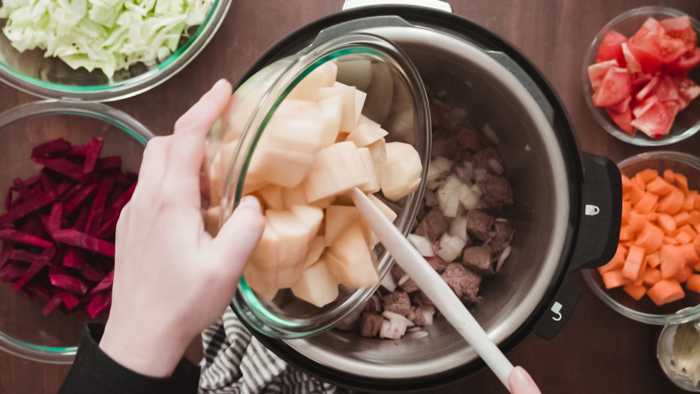
What does an Instant Pot do?
It’s probably easier to list what the Instant Pot doesn’t do, since its skillset is so broad.
Reeling off its capabilities sounds a bit like a Demtel ad: it pressure cooks, it slow cooks, it sears.
But wait, there’s more! It’s also a rice cooker, yoghurt maker, steamer, sauté pan and food warmer. And if you order today, we’ll even throw in a dehydrator! (Sorry, no steak knives with this one.)
The most ‘multi’ of all the Instant Pots, the Duo Crisp boasts no less than 13 functions, including pressure cook, sauté, steam, slow cook, sous vide, roast, grill, bake, dehydrate, yoghurt, proof and keep warm. (These aren’t exclusive to Instant Pot: many multi-cookers have these functions too.)
The Duo Crisp’s big drawcard, however, is the air fryer function, elevating it from mere multi-cooker to all-round kitchen boss and leaving regular multi-cookers in the dust.
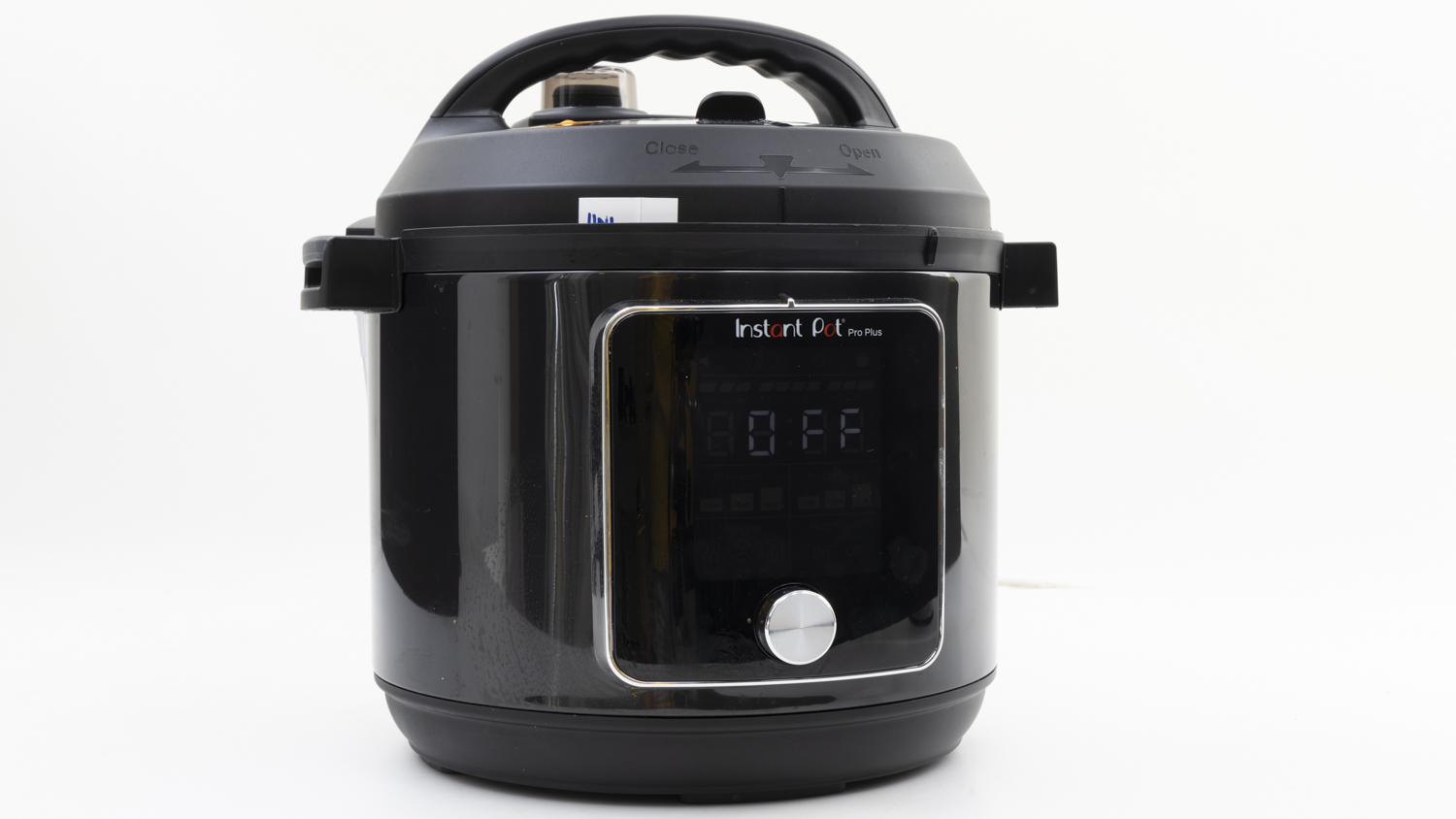
How much does an Instant Pot cost?
You can probably pick up an Instant Pot on sale, but at the time of writing, Instant Pots without the air fryer function start at $199* for the Duo Plus Multi-Cooker 3L, and go up to $399 for the Instant Pot Pro Plus 60 Multi-Cooker 5.7L with Wi-Fi.
If you’re after an Instant Pot with an air fryer, prices range from $389 for the Instant Pot Duo Crisp 8L to $449 for the Instant Pot Duo Crisp with Ultimate Lid 6.5L.
*Recommended Retail Price at time of writing.
Other multi-cookers with air fryer functionality
The only other brand we’ve tested that produces multi-cookers with an air fryer function is Ninja, which makes three models ranging in price from $500 for the Ninja Foodi 11-in-1 6L Multi Cooker to $800 for the Ninja Foodi SmartLid Multi Cooker.
We have tested two Ninja models. Read the full reviews:
Are Instant Pots any good?
We’ve tested two Instant Pots:
- Instant Pot Duo Crisp AF8 Multi-Use Pressure Cooker and Air Fryer
- Instant Pot Pro Plus 60 Electric Pressure Cooker 5.7L (no air fryer function)
(We’ve also tested the Instant Pot Duo Nova 5.7L, but it’s since been discontinued.)
Both models performed well in our testing, giving excellent results for pressure-cooking chilli beef and slow-cooking lamb shanks.
They were less impressive when it came to cooking rice, with our experts rating them as ‘borderline’ and ‘OK’ respectively.
We also tested the Instant Pot Duo Crisp AF8’s air frying capabilities alongside other air fryers, and it did quite well, scoring a perfect 100% for air frying frozen straight-cut chips, and performing well for a number of other cooking tests.
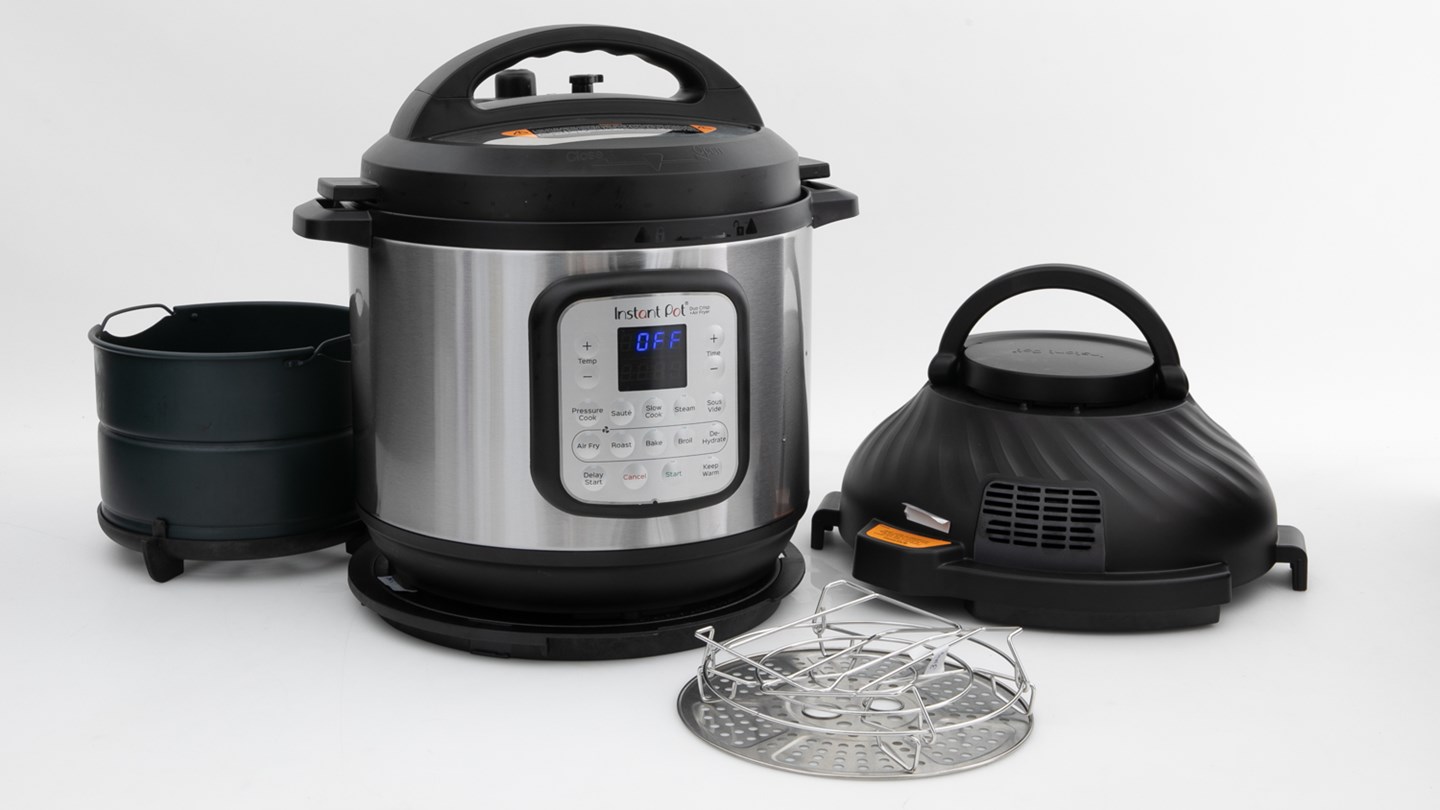
However, our experts marked it down on its ease of use, citing challenges with cleaning and the size of the unit (plus its attachments for air frying, which you’ll have to find space to store) as drawbacks.
They found the valves and seals for pressure cooking to be fiddly to clean, which is concerning since blocked seals and valves in pressure cookers can cause explosions, resulting in severe burns and other injuries.
You also need to remove, clean and replace the rubber seal and steam release mechanism after each use.
The exterior of the unit can also become dangerously hot, so you’ll need to be careful cooking with small children around.
Want to know how the Instant Pot compares with other multi-cookers and air fryers? Consider becoming a CHOICE member to get instant access to all of our expert, independent reviews.
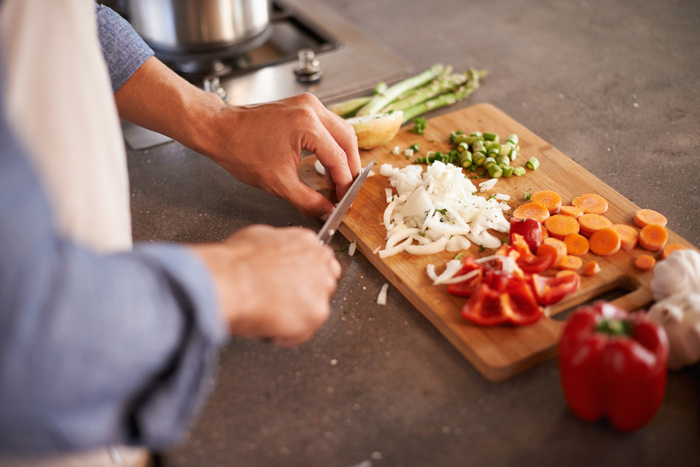
Instant Pots: Expert verdict
“If you’re time-poor and want to reduce the number of appliances in your kitchen, a multi-cooker can be a good purchase,” says CHOICE kitchen expert Fiona Mair.
“They can help expand your cooking repertoire, help you save time and free up cupboard space.
“However, they’re quite large so you’ll most likely need to find somewhere on your bench to store yours permanently. Plus, you’ll need cupboard space for all the accessories that come with it (although some accessories can be stored inside the unit when you’re not using it).
“The more features a multi-cooker has, the more expensive they tend to be, so make sure you’re actually going to use it – otherwise you’ll be giving up a big chunk of bench space and money for an appliance you don’t cook with often.”
On the whole, the Instant Pots we’ve reviewed have performed well in most tests, and they represent good value for money for the price
Fiona Mair, CHOICE kitchen expert
What Instant Pot features are worth having?
“A unique feature of the Instant Pot Pro Plus 60 is that the inner pot is stovetop safe and induction compatible,” says Fiona.
“It also has a Wi-Fi connection that’s easy to set up, and an app that allows you to control the settings temperature and the time from your phone. You can even make it release steam via the app from a distance.
“On the whole, the Instant Pots we’ve reviewed in our test kitchen have performed well in most tests, and they represent good value for money for the price,” says Fiona.
“But you should check our multi-cooker reviews and air fryer reviews to see how they compare with other models before you buy.”
How to cook with your Instant Pot
Each Instant Pot model may have slightly different cooking instructions, but the general method is about the same.
The Instant Pot website has ‘getting started’ pages for each model, which includes information and step-by-step videos showing how to use the various functions and how to clean the unit.
The company also has an app with more than 1400 recipes and you can download recipe eBooks from the Instant Pot website. The website also has guides for air fryer cooking and pressure cooking, which list the cooking times for various food types.
Here’s how to use some of the Instant Pot functions.
Important: These tips are a general guide only. Please check the manual for your Instant Pot to make sure you’re following the correct procedure for your specific model.
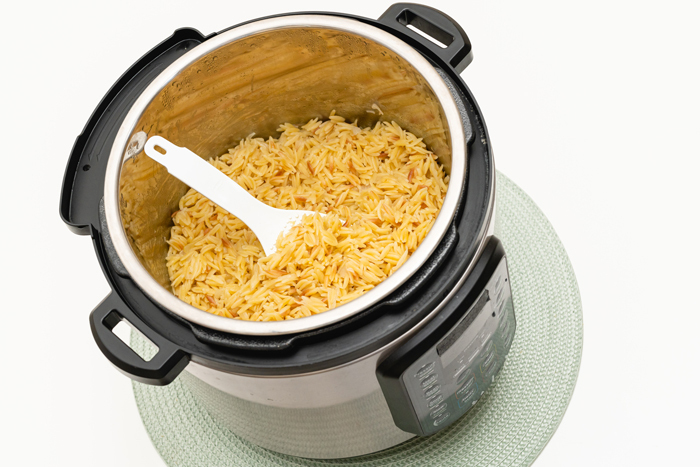
How to cook rice in an Instant Pot
One big plus of cooking rice in a multi-cooker like the Instant Pot is speed: the pressure cooker takes care of the rice in around 20 minutes, and you don’t need to check on it or set a timer like you do when you’re making rice on the stove.
The method may be slightly different depending on which model you have and what type of rice you’re cooking.
“When you’re cooking with a new appliance a bit of trial and error is needed,” Fiona says.
“With any recipe you may need to adjust the cooking time to get the best result. Cooking rice in a pressure cooker can vary due to the type of rice, what temperature the water is initially and if the grains are rinsed before cooking.”
Here’s how to cook rice in an Instant Pot:
- Add 250mL rice and 250mL water to the inner pot
- Lock the lid into place
- Select Rice/Pressure Cook and adjust to High
- Set the time to six minutes
- When the cooking program has finished, allow the pressure to release naturally for 10 minutes, then switch to quick release for the remaining pressure
- Unlock and remove the lid
- Fluff the rice with a fork, and serve immediately.
How to pressure cook with an Instant Pot
A pressure cooker can help you whip up a slow-cooked meal, fast. Think lamb shanks in 45 minutes, corned beef in an hour and risotto in just 20 minutes – it’ll look like you’ve been slaving over a hot stove for hours when you really only threw it together at the last minute.
Here’s how to use the pressure cooker function on an Instant Pot Duo Crisp.
Important: Before getting started, do a test run of the pressure cooking function to make sure everything is working safely.
- Select sauté and set the time as required
- When the display says ‘hot’, it’s ready to use
- Add oil and sauté ingredients
- Deglaze with a small amount of water, stock or other liquid, stirring to remove any food that’s stuck to the bottom of the pot
- Select cancel to stop the sauté program
- Add the remaining ingredients, including the minimum liquid required for your model (check your manual)
- Secure the lid
- Select ‘pressure cook’ and adjust timings according to Instant Pot’s recommendations
- The float valve will pop up when the unit reaches the right pressure, and the cooking cycle will start
- The display will say ‘end’ when it’s finished cooking
- Carefully press the steam release handle to release the pressure, or leave the unit to release the pressure naturally
- When the float valve drops down, that means the pressure has been fully released
Yes, you can! Here’s how:
- Add the solid and liquid ingredients to the inner pot
- Place the pressure cooking lid on the Instant Pot
- Set the steam release on the lid to ‘venting’
- Select ‘slow cook’
- Set the cooking time specified in the recipe
- Adjust the pressure to either low, medium or high temperature
- Leave the automatic ‘keep warm’ setting on
- Press start to begin
- Once the slow cooking cycle is complete, the Instant Pot will switch to ‘keep warm’ mode to keep your food warm until you’re ready to eat
The Natural Pressure Release starts as soon as the Instant Pot has finished the pressure-cook cycle. You don’t need to do anything to start the natural pressure release.
Keep an eye on the float valve (a raised silver button): you would’ve seen it lift up when the pressure cook cycle started. When the cooking cycle has finished, keep an eye on the float valve again: it will drop back down once the pressure has fully released.
Once it has dropped down into position, it’s safe for you to remove the lid.
The Quick Pressure Release is for foods that could overcook if they stay in the pressure cooker too long – things like seafood, eggs and some vegetables.
When your food has finished cooking, carefully push the steam release button to vent the steam. You’ll know that it’s finished when the float valve drops down again. It’s now safe for you to remove the lid.
How to clean your Instant Pot
If you’re going to buy in an Instant Pot, you’ll need to invest some time and elbow grease into keeping it working well.
Yes! You should wipe the inside of the lid before you use it for the first time, to remove any particles from the packaging.
For cleaning after the first use you can hand-wash the lid if you’d prefer, but it’s also dishwasher-safe.
Always put it on the top rack of the dishwasher; the heating element is at the bottom of the dishwasher, so using the bottom rack could damage the lid due to excessive heat.
Don’t just bung the lid in the sink or dishwasher and hope for the best. You need to remove all the small parts of the lid before washing.
Once you’ve removed the steam release valve and anti-block shield, clean inside the steam release pipe to prevent it clogging. Blocked seals and valves can cause issues when pressure cooking, so it’s an important step.
To drain water from the lid after you’ve washed it, hold the lid vertically over the sink, then turn it 360°. Once it’s clean and dry, store it upside down on the cooker base.
To stop the sealing rings taking on smells from strong-flavoured food, store them in a well-ventilated place.
If the lid is smelly, you can use a mix of white vinegar and water on a pressure cook cycle and then release the steam. Make sure you check the instructions in your product manual first to make sure you’re doing it safely – pressure cookers can explode and cause burns if they’re not used correctly.
The Instant Pot website has step-by-step guides for cleaning, use and maintenance for each of its appliances, so you can check the instructions for your particular model.
The inner pot (also called a bowl) is also dishwasher safe, but the company recommends washing it by hand before the first use. After that, you can put it in the dishwasher or hand-wash it.
You should make sure the outside is completely dry before you put it back inside the cooker base.
If food has burnt or stuck to the bottom, soak it for a few hours in hot water then wash as usual.
If the inner pot has stains from hard water, you can scrub it with a sponge and some vinegar.
Related





